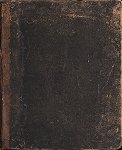Podophyllum.
more information and order at Remedia HomeopathyPodophyllum peltatum. May Apple. Mandrake (American). N. O. Berberidaceae (by some placed in the Ranunculaceae and closely related to both). Tincture of root gathered after fruit has ripened; of whole fresh plant; of ripe fruit. Solution of resinous extract, Podophyllin.
Clinical.-Acidity. Amenorrhoea. Anus, Prolapse of. Asthma, bronchial. Bilious attack. Bronchitis. Cataract. Cholera infantum. Cornea, ulcer of. Dentition. Diarrhoea; camp. Duodenum, catarrh of. Dysentery. Dysmenia. Dyspepsia; from calomel. Fevers. Flatulence. Gagging. Gall-stones. Gastric catarrh. Goître. Haemorrhoids. Headache, sick; bilious. Heart, pains in. Hydrocephaloid. Intermittents. Jaundice. Leucoma. Liver, affections of. Ophthalmia. Ovaries, pains in; numbness in; tumour of. Palpitation. Pneumonia. Proctitis. Prostatitis. Pustules. Sciatica. Stomatitis. Strabismus. Taste, lost, perverted; illusions of. Tenesmus. Tongue, burning in. Urticaria. Uterus, prolapse of. Whooping-cough. Worms.
Characteristics.-Pod. grows throughout the United States in damp, shady places in woods, has leaves five to nine-lobed, large white nodding flowers, yellowish fruits, egg-shaped, not unlike a small lemon, hence the plant is sometimes called Wild Lemon. It flowers in May and June, and the fruit ripens in October. Indian tribes use the root to expel worms, and drop the juice of the root into the ear to cure deafness. "All the tribes are fond of the fruit," says Rafinesque, quoted by Hale, who gives a full account of the medicine. The botanic and eclectic practitioners adopted the remedy and used it as the "vegetable mercury." The first homoeopathic proving was made by Williamson. An unintentional proving recorded by E. V. Rose (H. W., xxv. 246) brings out the chief characteristics of Pod., and shows that its reputation as a "vegetable mercury is not undeserved: Mr. J., 26, took at 11 a.m. gr. x of Pod. 1x to "stir up his liver." At 6 p.m. was taken with an indescribable sick feeling all over, and a persistent dry, rough feeling in pharynx and oesophagus, extending along right Eustachian tube, with dull, aching pain in right ear; feeling as though a ball or lump in upper oesophagus. At 8 p.m. dull and stupefying headache, chiefly frontal, < lying down. Fulness in stomach, belching of gas, sour eructations; marked salivation and offensive odour from mouth. Sleep disturbed, full of confused dreams; rolled and tossed about, bed felt too hard; and a feeling as though head and shoulders were lying too low. At 3 a.m. call to stool, which was profuse, watery, dark green. Calls frequent. Before stool: peculiar weak, dull, griping pain below umbilicus; fulness in rectum. During stool: weak feeling in stomach. After stool: tenesmus and faint feeling. These symptoms passed off in two or three days, the diarrhoea being followed by constipation, which was quickly removed by Nux. These symptoms are nearly all proved characteristics of Pod.: The early morning
Podophyllum peltatum is available at Remedia Homeopathy
more information and order at Remedia HomeopathyOther names for this homeopathic remedy: Podophyllum peltatum, Entenfuß, Fußblatt, Maiapfel, Mandrake, Podophyllum, wilde Zitrone, Zitrone, wilde,
 Free Materia Medica books
Free Materia Medica books

